Kristijan D. Jovanoski
Dopaminergic systems create reward seeking despite adverse consequences
Jovanoski, Kristijan D.; Duquenoy, Lucille; Mitchell, Jessica; Kapoor, Ishaan; Treiber, Christoph D.; Croset, Vincent; Dempsey, Georgia; Parepalli, Sai; Cognigni, Paola; Otto, Nils; Felsenberg, Johannes; Waddell, Scott
Authors
Lucille Duquenoy
Jessica Mitchell
Ishaan Kapoor
Christoph D. Treiber
Dr Vincent Croset vincent.croset@durham.ac.uk
Assistant Professor
Georgia Dempsey
Sai Parepalli
Paola Cognigni
Nils Otto
Johannes Felsenberg
Scott Waddell
Abstract
Resource-seeking behaviours are ordinarily constrained by physiological needs and threats of danger, and the loss of these controls is associated with pathological reward seeking1. Although dysfunction of the dopaminergic valuation system of the brain is known to contribute towards unconstrained reward seeking2, 3, the underlying reasons for this behaviour are unclear. Here we describe dopaminergic neural mechanisms that produce reward seeking despite adverse consequences in Drosophila melanogaster. Odours paired with optogenetic activation of a defined subset of reward-encoding dopaminergic neurons become cues that starved flies seek while neglecting food and enduring electric shock punishment. Unconstrained seeking of reward is not observed after learning with sugar or synthetic engagement of other dopaminergic neuron populations. Antagonism between reward-encoding and punishment-encoding dopaminergic neurons accounts for the perseverance of reward seeking despite punishment, whereas synthetic engagement of the reward-encoding dopaminergic neurons also impairs the ordinary need-dependent dopaminergic valuation of available food. Connectome analyses reveal that the population of reward-encoding dopaminergic neurons receives highly heterogeneous input, consistent with parallel representation of diverse rewards, and recordings demonstrate state-specific gating and satiety-related signals. We propose that a similar dopaminergic valuation system dysfunction is likely to contribute to maladaptive seeking of rewards by mammals.
Citation
Jovanoski, K. D., Duquenoy, L., Mitchell, J., Kapoor, I., Treiber, C. D., Croset, V., …Waddell, S. (2023). Dopaminergic systems create reward seeking despite adverse consequences. Nature, 623(7986), 356-365. https://doi.org/10.1038/s41586-023-06671-8
| Journal Article Type | Article |
|---|---|
| Acceptance Date | Sep 22, 2023 |
| Online Publication Date | Oct 25, 2023 |
| Publication Date | Nov 9, 2023 |
| Deposit Date | Oct 26, 2023 |
| Publicly Available Date | Oct 27, 2023 |
| Journal | Nature |
| Print ISSN | 0028-0836 |
| Electronic ISSN | 1476-4687 |
| Publisher | Nature Research |
| Peer Reviewed | Peer Reviewed |
| Volume | 623 |
| Issue | 7986 |
| Pages | 356-365 |
| DOI | https://doi.org/10.1038/s41586-023-06671-8 |
| Keywords | Drosophila, Dopamine, Reward, Compulsive behaviour |
| Public URL | https://durham-repository.worktribe.com/output/1818838 |
Files
Published Journal Article
(10.5 Mb)
PDF
Licence
http://creativecommons.org/licenses/by/4.0/
Publisher Licence URL
http://creativecommons.org/licenses/by/4.0/
Copyright Statement
This article is licensed under a Creative Commons Attribution 4.0 International License, which permits use, sharing, adaptation, distribution and reproduction in any medium or format, as long as you give appropriate credit to the original author(s) and the source, provide a link to the Creative Commons licence, and indicate if changes were made. The images or other third party material in this article are included in the article’s Creative Commons licence, unless indicated otherwise in a credit line to the material. If material is not included in the article’s Creative Commons licence and your intended use is not permitted by statutory regulation or exceeds the permitted use, you will need to obtain permission directly from the copyright holder. To view a copy of this licence, visit http://creativecommons.org/licenses/by/4.0/.
Published Journal Article (Advance Online Version)
(10.5 Mb)
PDF
Licence
http://creativecommons.org/licenses/by/4.0/
Publisher Licence URL
http://creativecommons.org/licenses/by/4.0/
Copyright Statement
This article is licensed under a Creative Commons Attribution 4.0 International License, which permits use, sharing, adaptation, distribution and reproduction in any medium or format, as long as you give appropriate credit to the original author(s) and the source, provide a link to the Creative Commons licence, and indicate if changes were made. The images or other third party material in this article are included in the article’s Creative Commons licence, unless indicated otherwise in a credit line to the material. If material is not included in the article’s Creative Commons licence and your intended use is not permitted by statutory regulation or exceeds the permitted use, you will need to obtain permission directly from the copyright holder. To view a copy of this licence, visit http://creativecommons.org/licenses/by/4.0/.
You might also like
Gliotransmission of D-serine promotes thirst-directed behaviors in Drosophila
(2022)
Journal Article
Drosophila Ionotropic Receptor 25a mediates circadian clock resetting by temperature
(2015)
Journal Article
Draft genome of the red harvester ant Pogonomyrmex barbatus
(2011)
Journal Article
Downloadable Citations
About Durham Research Online (DRO)
Administrator e-mail: dro.admin@durham.ac.uk
This application uses the following open-source libraries:
SheetJS Community Edition
Apache License Version 2.0 (http://www.apache.org/licenses/)
PDF.js
Apache License Version 2.0 (http://www.apache.org/licenses/)
Font Awesome
SIL OFL 1.1 (http://scripts.sil.org/OFL)
MIT License (http://opensource.org/licenses/mit-license.html)
CC BY 3.0 ( http://creativecommons.org/licenses/by/3.0/)
Powered by Worktribe © 2025
Advanced Search
